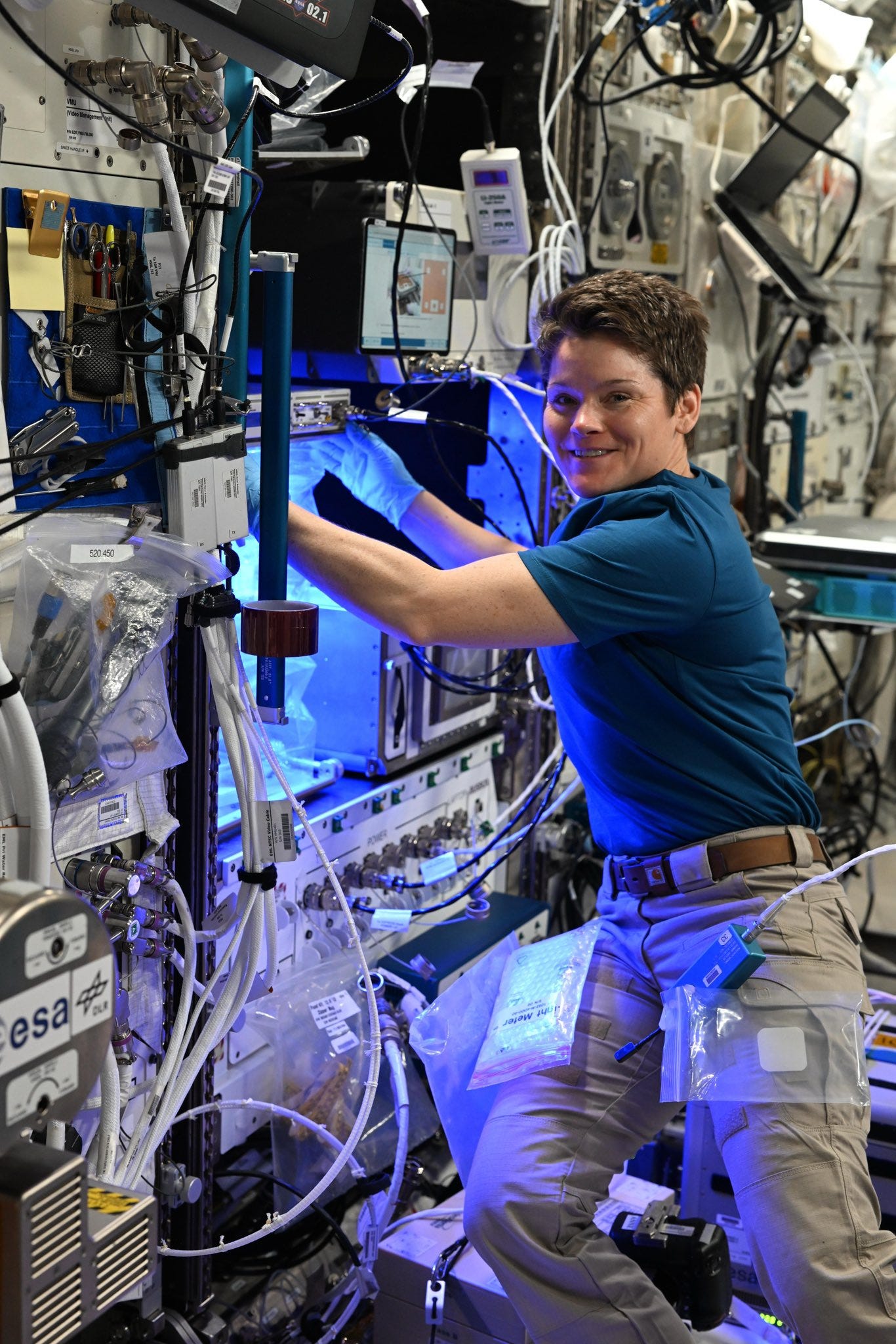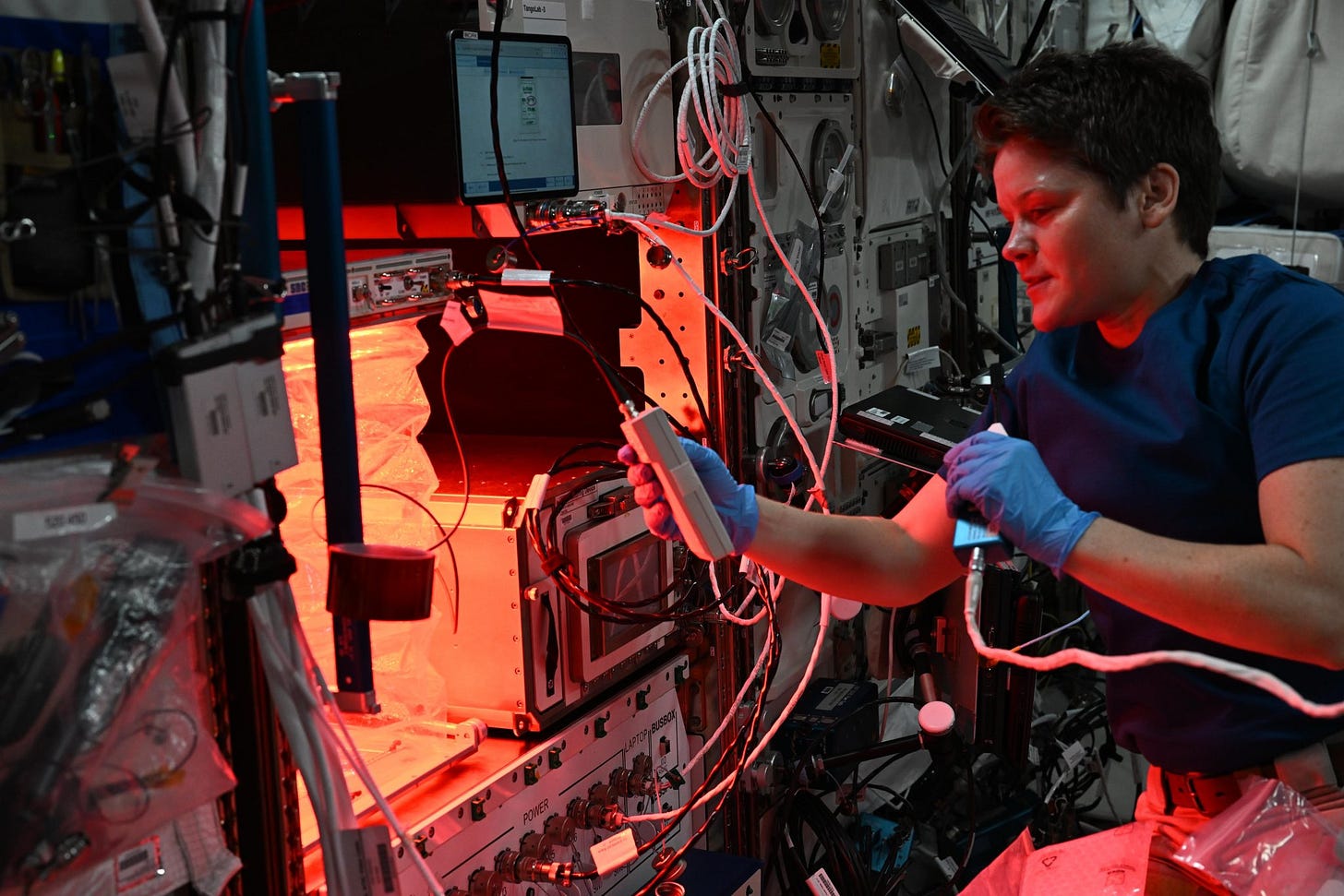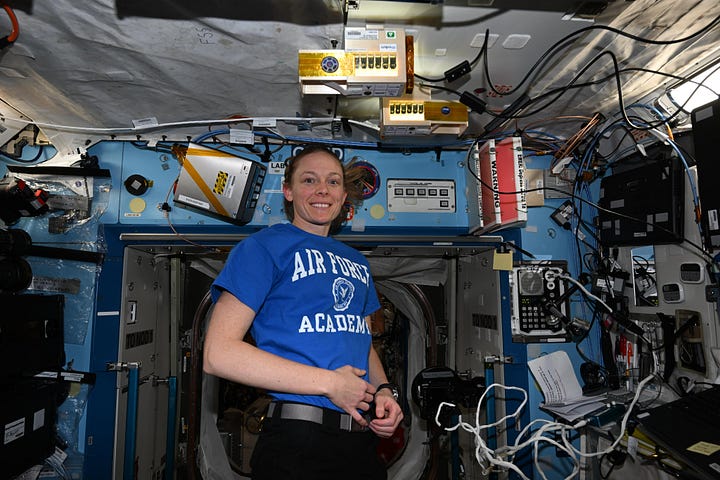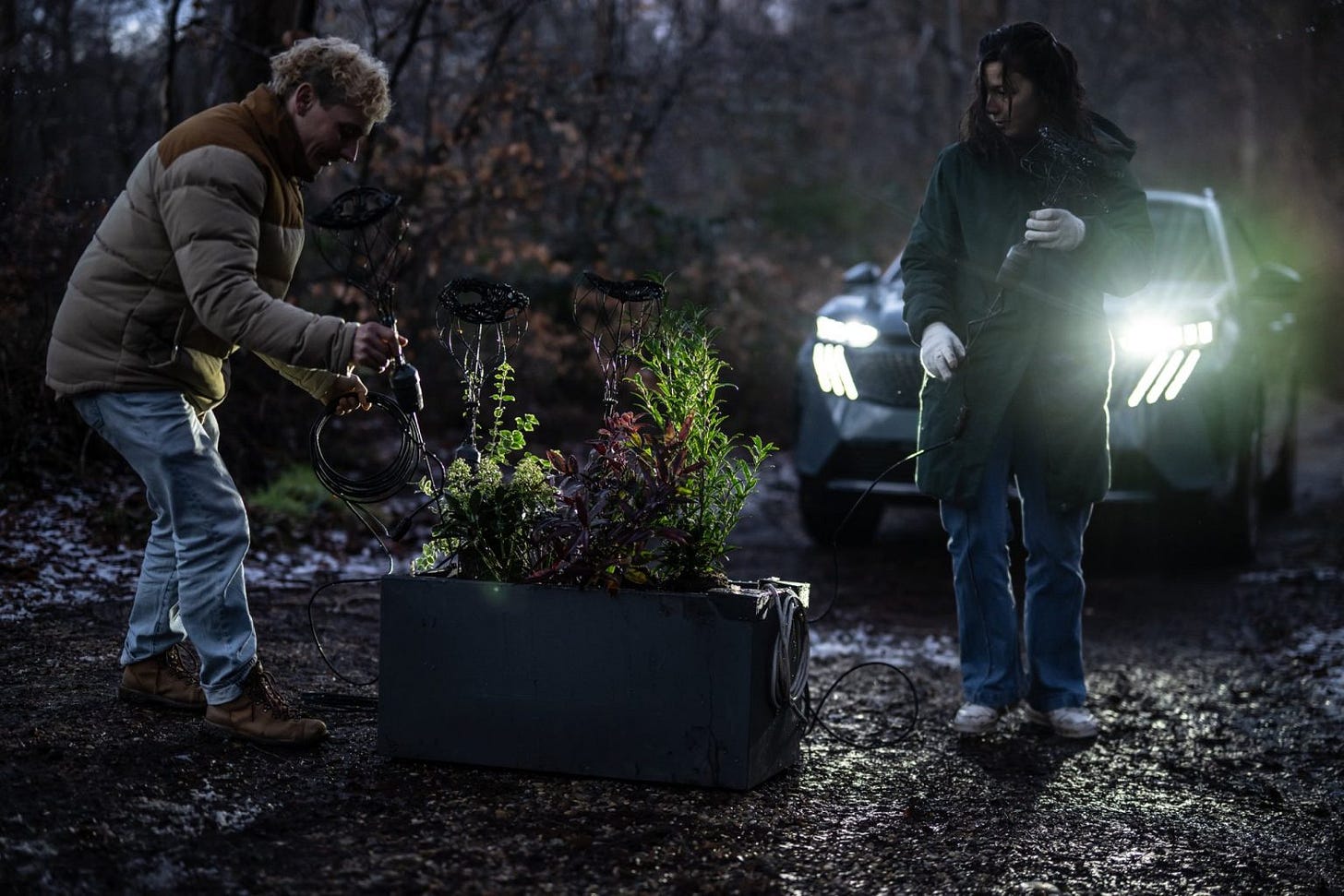Gardeners of the Galaxy Mission Report: 13 May 2025
My Top 10 Stories from the world of space plants and gardening. This week we've got SPACE tomatoes in space, Moon rocks arriving in the UK and a photoshoot powered by plants!
Hello, Gardeners of the Galaxy! Welcome to this week's Mission Report.
1: How does space radiation affect plants?
That’s the question Advanced Plant EXperiment-12 (APEX-12) is seeking to answer. NASA astronaut Anne McClain installed a series of petri dishes with Arabidopsis plants into the VEGGIE facility on the International Space Station (ISS) on 28 April, after their recent arrival on SpaceX CRS-32.

For seven days, the plants would grow in the microgravity environment, before being frozen to await their ride home. The research team on Earth will look into how radiation may have impacted the genome and telomere activity of the plants (telomeres are protectors of chromosomes, and are a marker of a plant’s survivability). The experiment aims to tell us how we can equip plants to cope with the stress of long duration space missions.

2: Space SPACE tomatoes!


Also on the ISS, NASA astronaut Nicole Ayers posed with the Rhodium USAFA Non-Photosynthetic Inquiry into Growth Habit Traits, or Rhodium USAFA NIGHT, investigation is assessing the growth of genetically modified Small Plants for Agriculture in Confined Environments (SPACE) tomatoes.
Understanding how these plants respond to space stressors could support the development of crops in closed agricultural systems that can grow with techniques other than photosynthesis.
The space-flown SPACE tomatoes will be compared to plants grown on the ground to further characterise the effects of cultivation in space.
3: Recycling blood for fertiliser
The all-female crew of the Hypatia II mission lived for two weeks at the Mars Desert Research Station (MDRS) in Utah, studying how Mars exploration would affect women's bodies. One of their key findings is that menstrual blood could be a useful natural fertiliser for growing food in greenhouses on Mars.
Read more: Hypatia II Mission studies the effects of a space mission to Mars on the female body and Hypatia Mars
4: EDEN LUNA has a web page!
The DLR has a new web page about EDEN LUNA, the greenhouse within a shipping container that will be attached to the new LUNA analog facility in Bremen.
Read more: EDEN LUNA – a greenhouse for growing the future of food
5: Norwegians exploring plant stress
Through experiments where plants have been exposed to stress, researchers have found that plants tolerate stress better the next time they experience it. To find out how long plants remember, the researchers took seeds from plants in different parts of Norway.
Read more: Plants can remember stress they experienced as seeds
6: Chinese Moon rocks arrive in the UK
The first samples of Moon rock brought back to Earth in nearly 50 years have arrived in the UK - on loan from China. The tiny grains of dust are now locked inside a safe in a high security facility and are being prepared for studies by researchers at the Open University.
Read more: Moon dust 'rarer than gold' arrives in UK from China
7: Can farmers grow crops in flooded fields?
The word might be baffling, but the concept is simple: paludiculture is the use of wet peatlands for agriculture, a practice that goes back centuries in the UK, including growing reeds for thatching roofs. The belated realisation of how precious those habitats are is driving an international €10m (£8.4m) wetter farming project – Palus Demos – in which previously drained peatlands will be rewetted, with farmers helped to grow crops that thrive in boggier conditions.
Read more: ‘A win-win for farmers’: how flooding fields in north-west England could boost crops
8: Inside a German seed bank
At the Dahlem Seed Bank at Berlin’s botanical gardens, shelves of glass jars are jam-packed with vials of seeds. The 12,000-plus collection include seeds of many rare or threatened European species, vital members of ecosystems and unique products of eons of evolution.
Read more: To Safeguard Threatened Plants, Scientists Must Master the Tricky Art of Seed Banking
9: Powered by plants?

Collaborating with Dutch research and design studio Nova Innova, PEUGEOT harnessed energy from plants, soil, and water to light the night shoot of its all-electric new PEUGEOT E-5008. When plants photosynthesise, they produce excess organic compounds as waste, which are released into the soil where they live. Exoelectrogenic bacteria digest this organic waste and release electrons. A microbial fuel cell buried in the soil captures these electrons, which are connected to batteries that are continuously charged. These batteries were used to supplement the living light module for the photoshoot.
Read more: Peugeot lights the world’s first photoshoot powered by nature
10: Inside China's Mars 'space base'
Don’t forget that I regularly post fresh content to my Space Botany website. This week I have a story about some tree seeds that Frank Rubio took to space, which didn’t make the English-language news.
I'll be back in your inboxes next week. Thanks for reading and being part of the Gardeners of the Galaxy community.
Ex solo ad astra,
Emma (Space Gardener)



